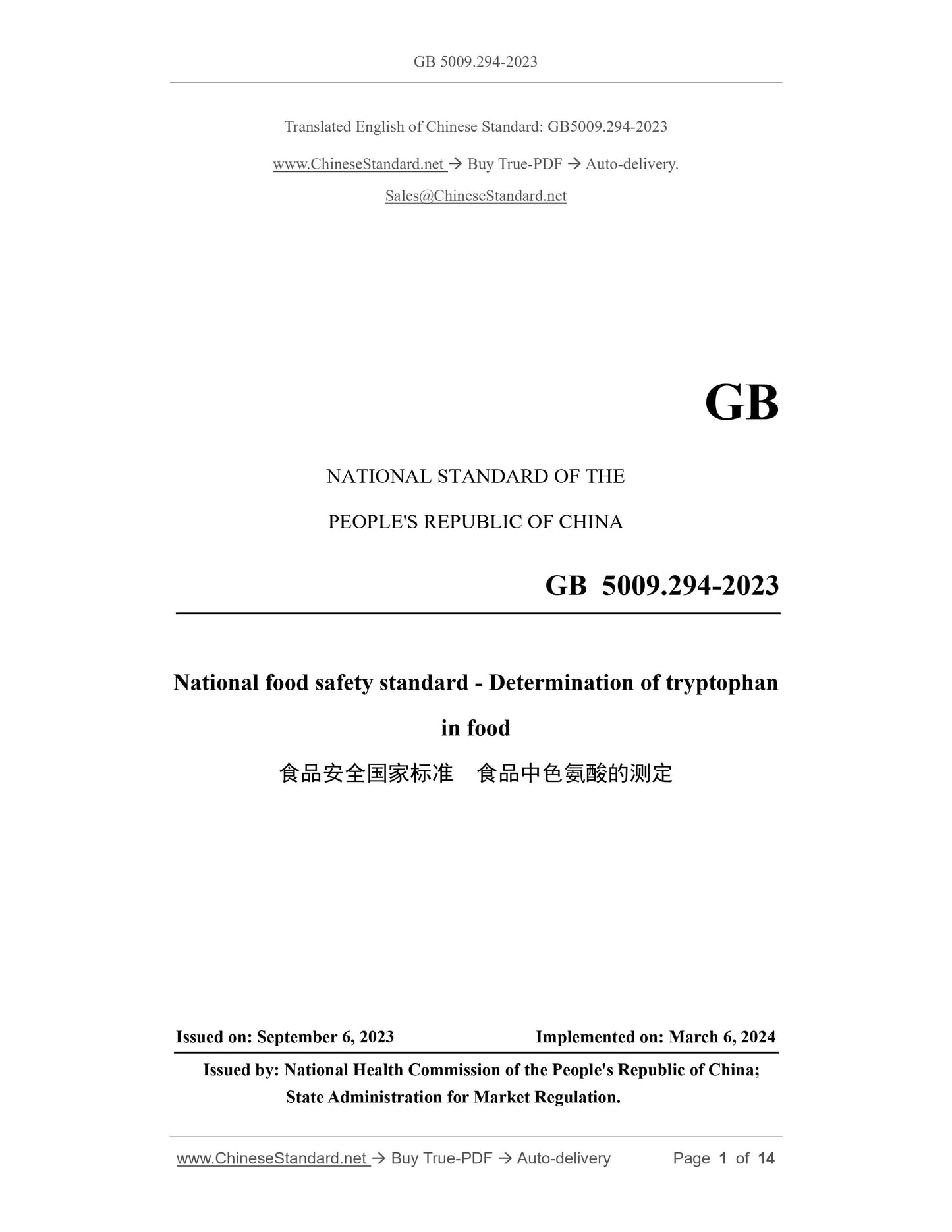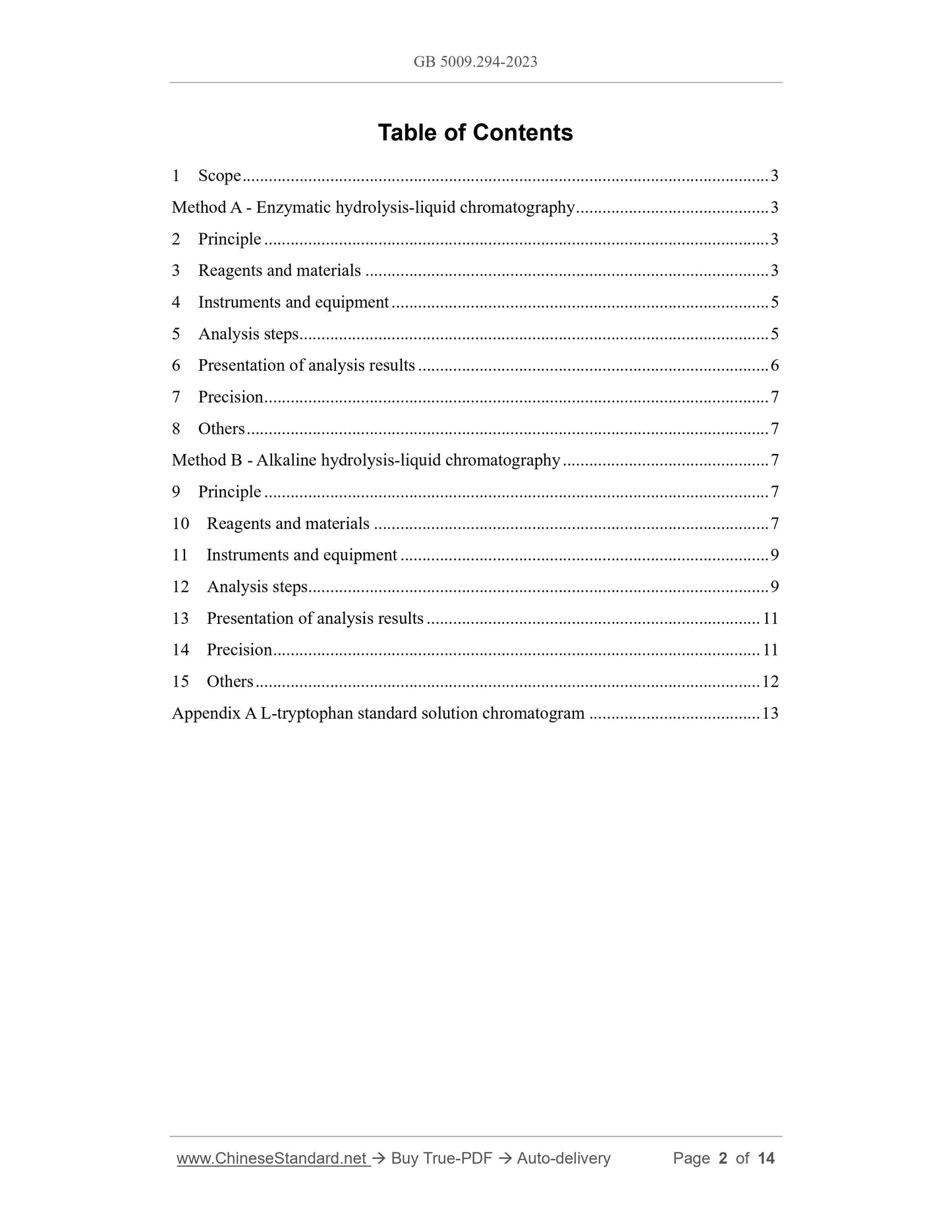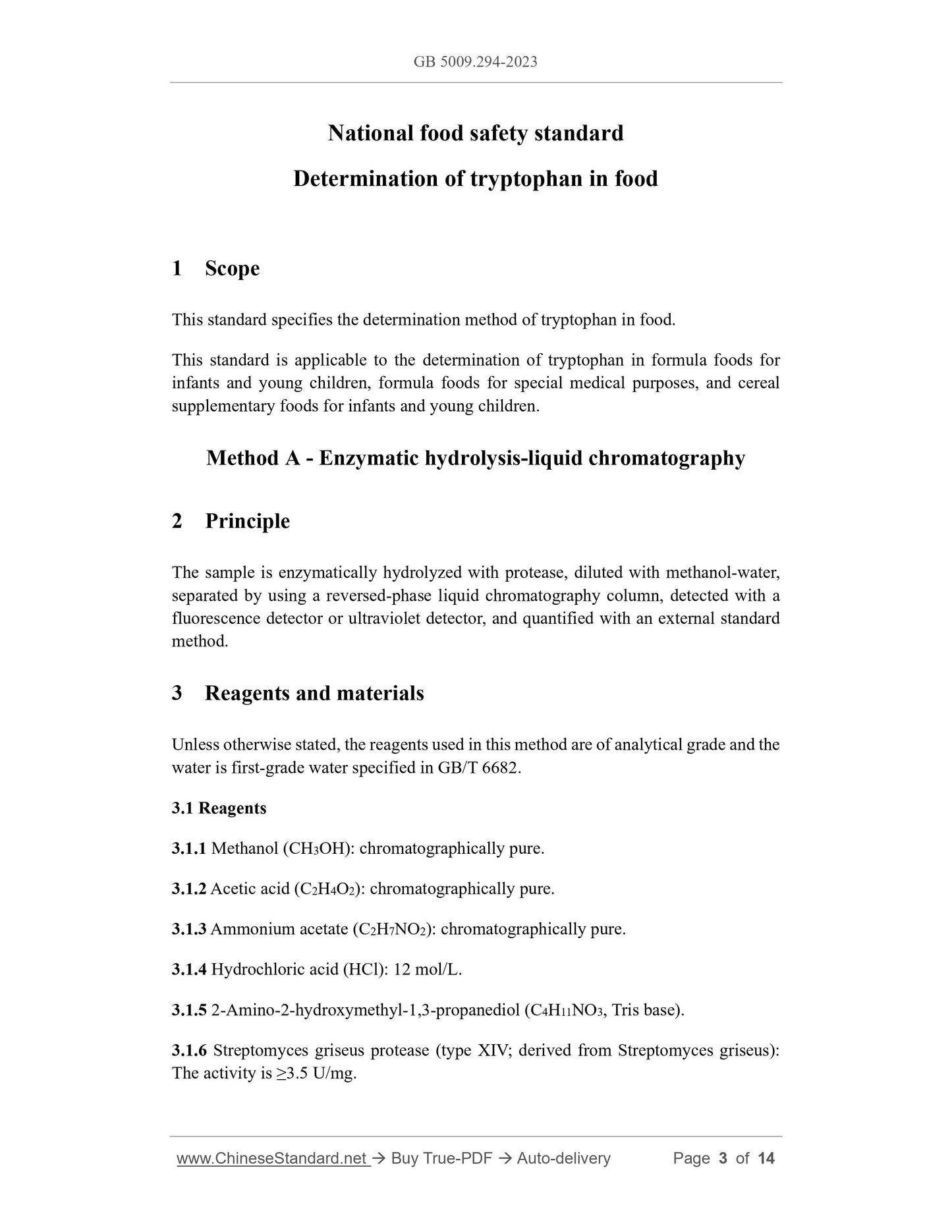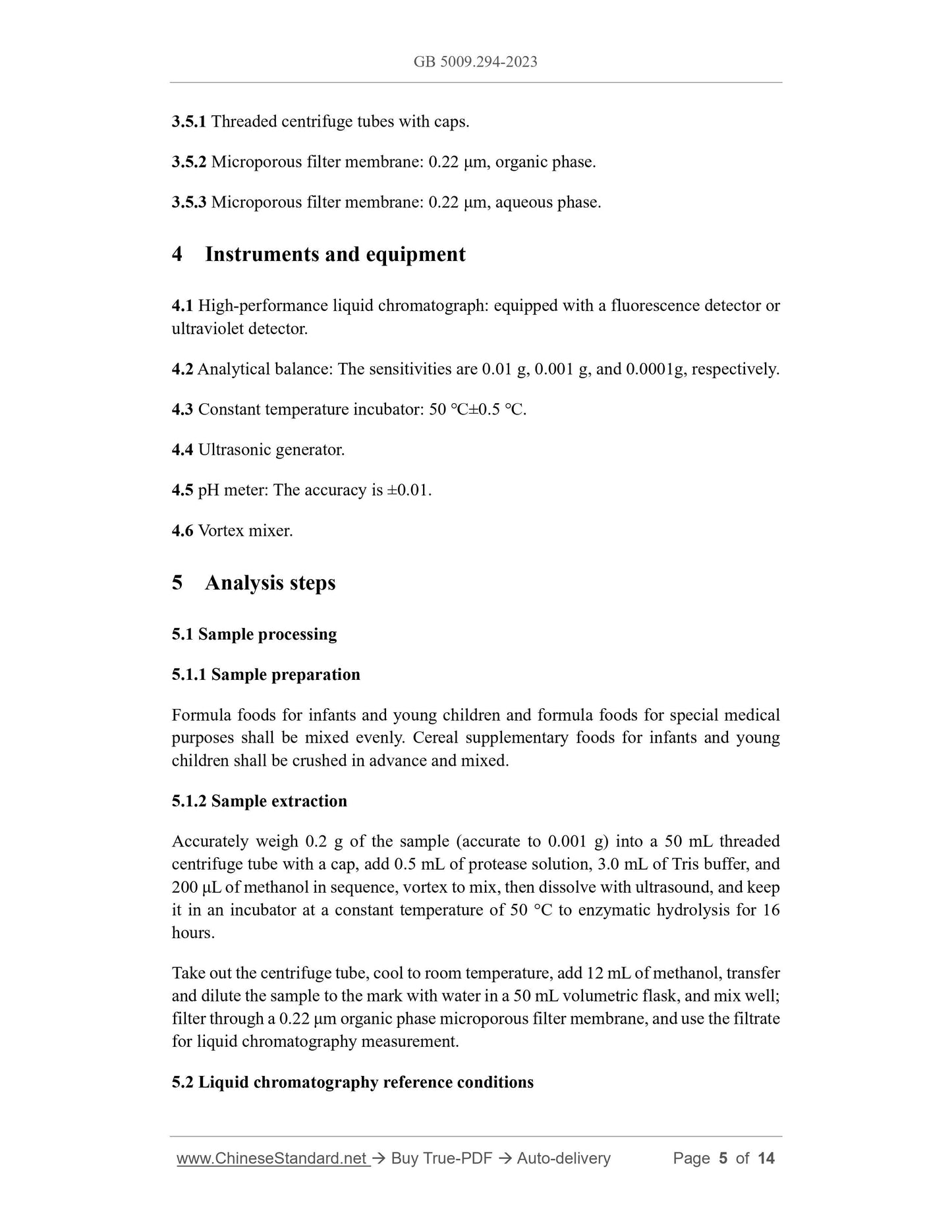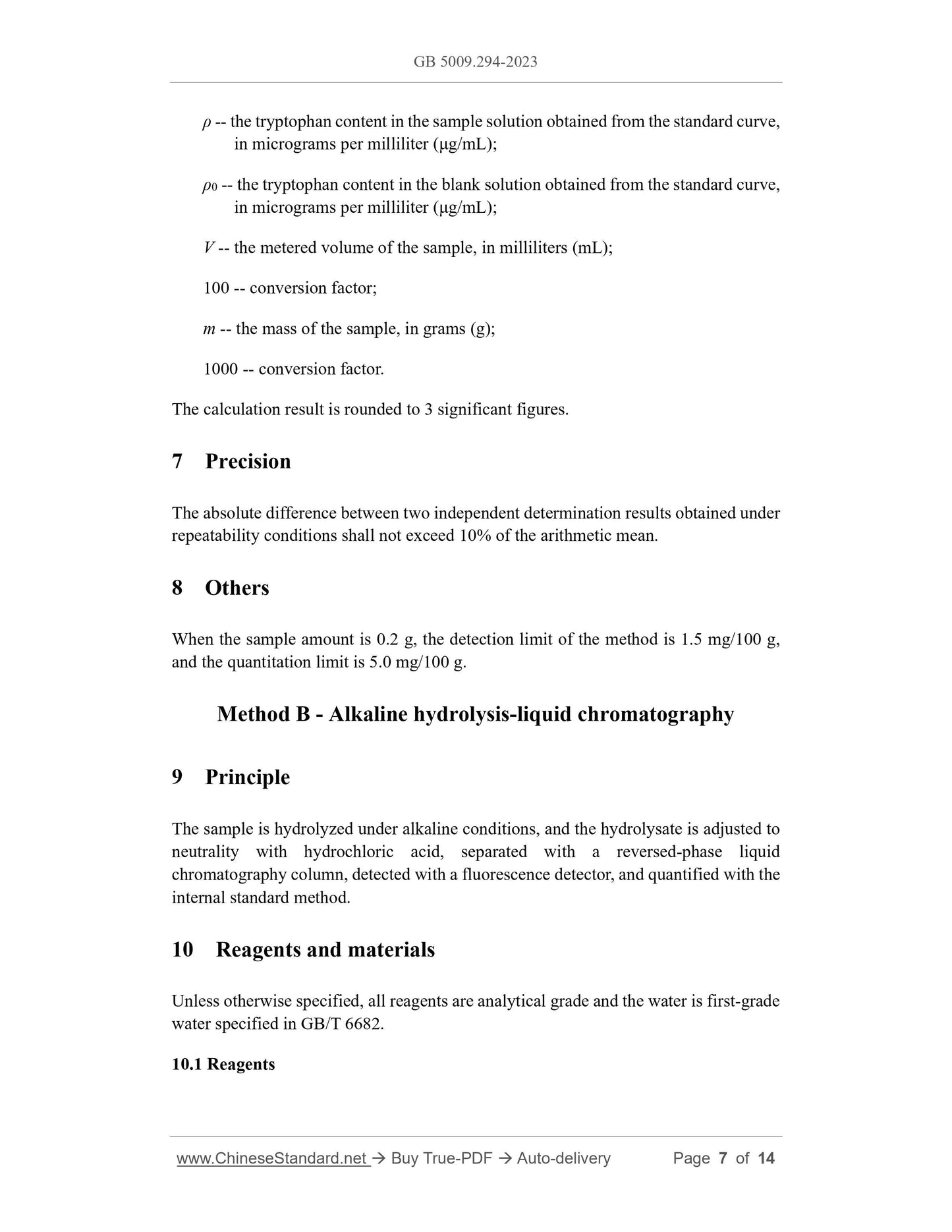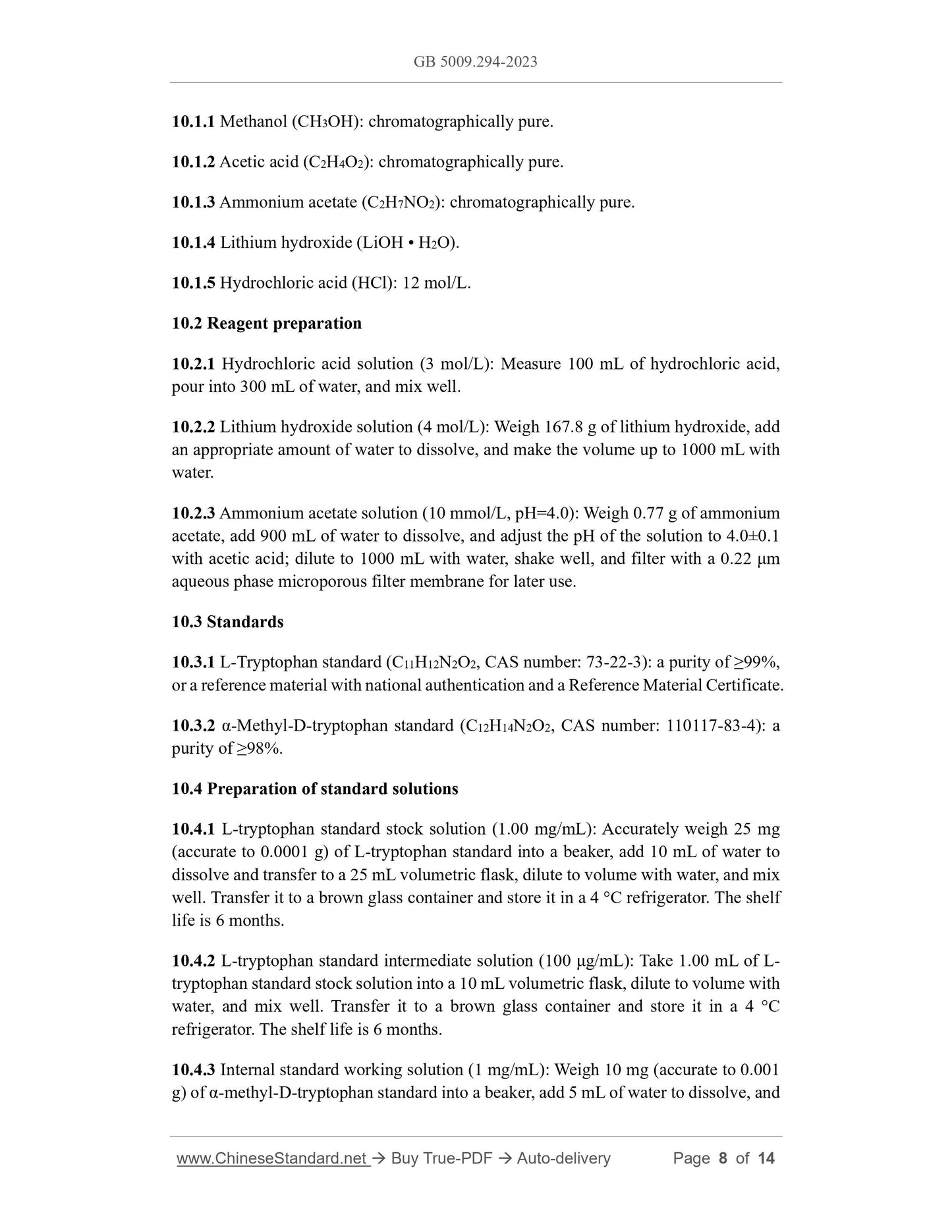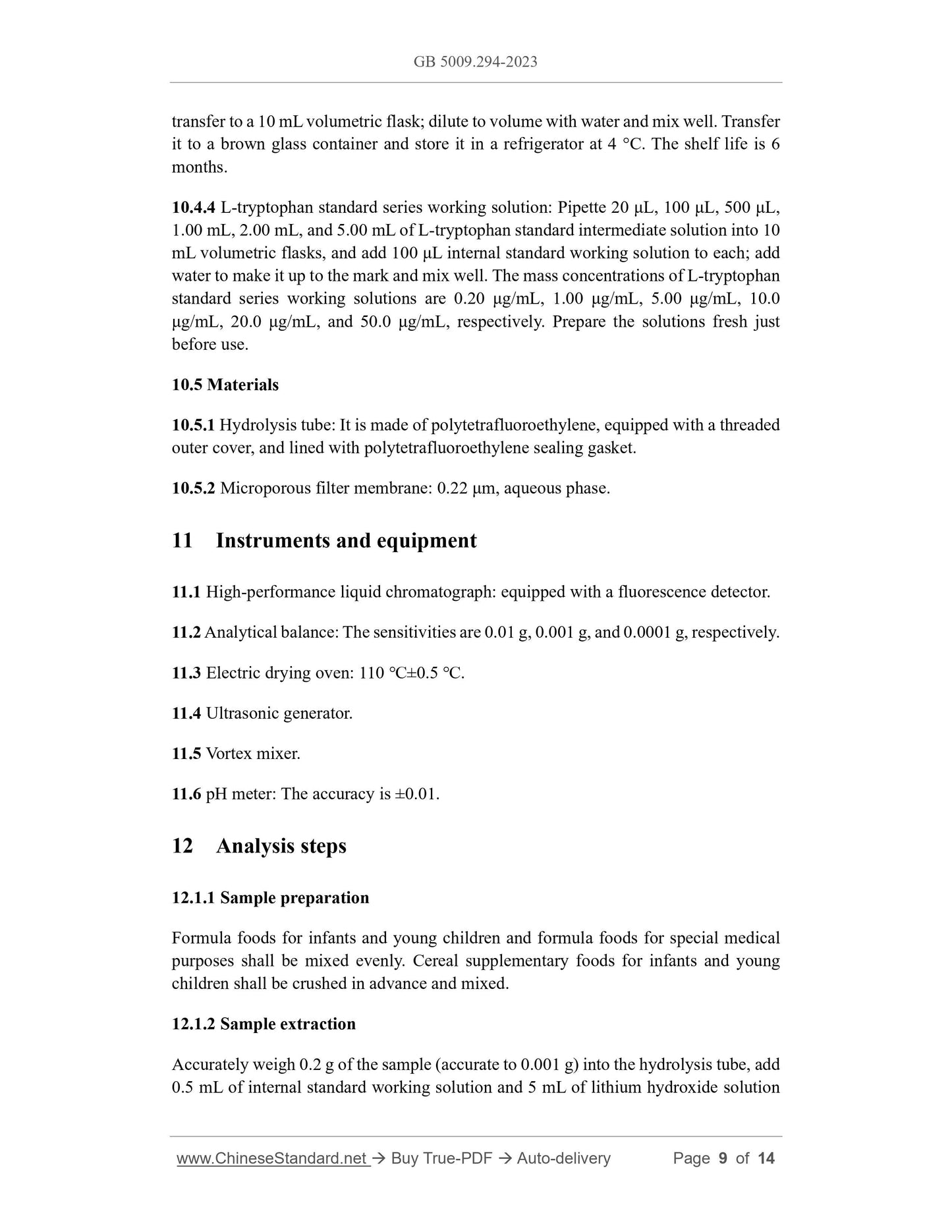1
/
of
8
www.ChineseStandard.us -- Field Test Asia Pte. Ltd.
GB 5009.294-2023 English PDF
GB 5009.294-2023 English PDF
Regular price
$155.00
Regular price
Sale price
$155.00
Unit price
/
per
Shipping calculated at checkout.
Couldn't load pickup availability
GB 5009.294-2023: National food safety standard - Determination of tryptophan in foods
Delivery: 9 seconds. Download (and Email) true-PDF + Invoice.Get Quotation: Click GB 5009.294-2023 (Self-service in 1-minute)
Newer / historical versions: GB 5009.294-2023
Preview True-PDF
Scope
This standard specifies the determination method of tryptophan in food.This standard is applicable to the determination of tryptophan in formula foods for
infants and young children, formula foods for special medical purposes, and cereal
supplementary foods for infants and young children.
Method A - Enzymatic hydrolysis-liquid chromatography
Basic Data
| Standard ID | GB 5009.294-2023 (GB5009.294-2023) |
| Description (Translated English) | National food safety standard - Determination of dietary fiber in foods |
| Sector / Industry | National Standard |
| Classification of Chinese Standard | X09 |
| Word Count Estimation | 12,173 |
| Date of Issue | 2023-09-06 |
| Date of Implementation | 2024-03-06 |
| Issuing agency(ies) | National Health Commission of the People's Republic of China, State Administration for Market Regulation |
| Summary | This standard specifies the determination method of dietary fiber in food. This standard is applicable to the determination of total dietary fiber, soluble dietary fiber, and insoluble dietary fiber in plant foods and their products, as well as foods with added dietary fiber components. |
Share
